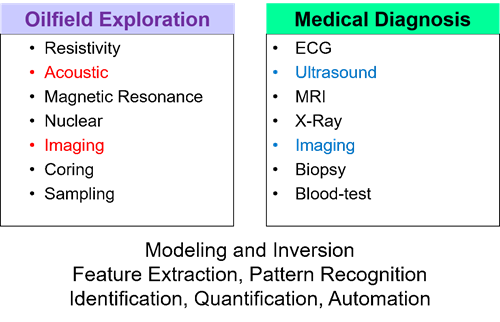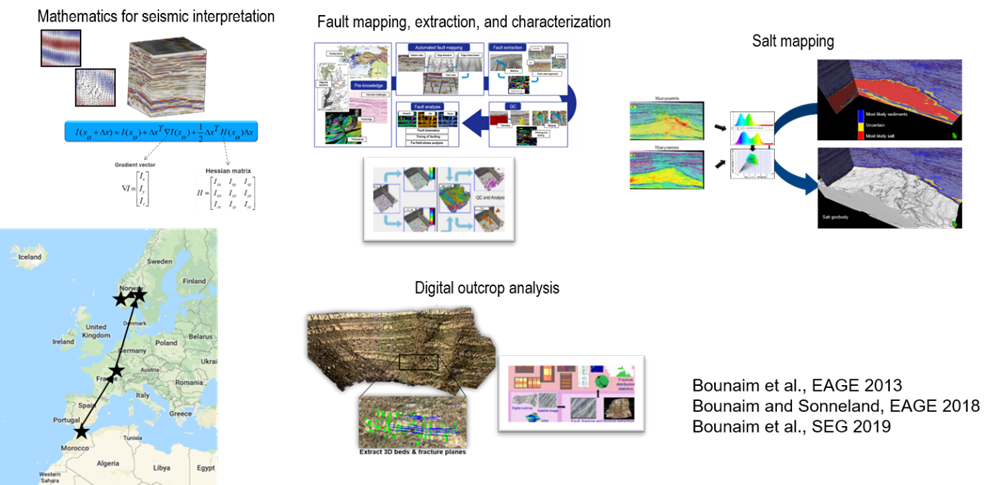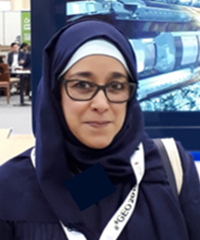Applications of mathematics to real world problems: a research career from medical imaging to oil business
It all starts with a female postdoc position in Norway…
It was a four-year female postdoc position I was awarded at the university of Oslo and Simula Research Centre that brought me to Norway. The project I took part in dealt with mathematical modeling and numerical simulation of an ultrasound technique for breast cancer detection.
The topic was new to me given that last time I studied biology goes back to high school. In a multi-expertise team including a medical doctor, a professor in physics of complex systems, and IT engineers, I was introduced to mathematics applied to medicine. I learned how to extract and analyze data collected from clinical studies to put it all together into a mathematical model that mimics the ultrasound technique under study.
Early detection of breast cancer saves lives and an efficient ultrasound technology should be able to detect, and is very sensitive to, very small tumors. For this purpose, the proposed mathematical model should take into account various parameters, and those are empirically identified from clinical data. This was a rich experience where I made use of my competences from my PhD research based in partial differential equations, domain decomposition methods, optimal control methods, and parallel computing.
Our research results were presented at international conferences and published in journals of applied mathematics and applications, ultrasonics…etc.
A foot in oil…from oceanography…
After my postdoc, I was still interested in an academic career but staying in Norway, the offers fitting my profile were very few and I ended up in a temporary position as research scientist at R&D division of the meteorological institute working in an European project aiming at developing an oil drift prediction system. This was the transition to oil related research, but from an oceanography perspective. Understanding the ocean, waves, and wind models, some petrophysics aspects, and other more complex systems just put me closer to more dynamic systems, their modeling, and simulation, together with more and more real data to access, analyze, and make all the system accessible through friendly platforms operated by each of the partners of this European project.
This was another opportunity for more team spirit work environment. Unfortunately, the European project was running in a limited period. Consequently, I had to look for more stable research career, and by looking for a new position, I got to know there were research possibilities in industry.
A rich research career in an industry research center…
And my story in Schlumberger started when I was selected for a research scientist position at Schlumberger Stavanger Research in October 2005. From medical application and breast cancer to seismic and geology—one should say I made the big jump, but frankly, I did not think too much about it. I remember when reading through the job announcement, most of the wording converged into mathematics, algorithms, and numerical methods. I felt safe and did not hesitate in applying as long as it had to do with research. I do not regret my decision!
Our manager was a visionary and wise man, putting a mix of good brains into an inspiring team. I joined a multi-disciplinary research group including geologists, geo-statisticians, petro-physicists, IT engineers, and mathematicians like myself, most of them with a PhD. The research environment and moreover the projects we were involved in have nurtured my view on research in industry with yet more real and challenging data to play with.
Now if I am asked how we can work with medical imaging and go to seismic and geological interpretation in oil sector, my answer would be the two problems are very close. In both of them, we are looking for something abnormal into a normal medium: a tumor or cancer cannot be found in the whole body, and similarly, oil or gas cannot be discovered all over the Earth. Both are small objects/bodies in a larger body, and both rely on good and efficient imaging to be able to identify, as summarized below.

My competences and research experiences
I have been within Schlumberger for nearly 15 years during which I have acquired a strong background as expert in seismic interpretation from mathematical and algorithmic point of view. Being part of a multi-disciplinary team has highly shaped my new skills as key technical contributor to different projects, each presenting new challenges. These challenges have been the driver of exploring new areas, developing new algorithms and new workflows, and in particular, translating the needs of my geologist colleagues into new tools that form general and integrated workflows. I still feel I am applied mathematician, but with an eye now deeply watching the seismic signal and any multi-dimensional data that can help in the different stages of oil and gas exploration or production. I have been involved in different projects involving big actors and clients. Moreover, many of the research collaborations have enriched my knowledge of different fields, namely, in the North Sea, the Barents Sea and Gulf of Mexico, among others.
Working with geologists, geophysicists, geo-statisticians, mathematicians, and IT-developers has kept me inspired to find solutions to more concrete problems addressed in geological interpretation and modeling, and geophysics. In particular, it has been interesting to contribute to solving problems that involve processing and analysis of different types of 2D, 3D and 4D data, where a major part is related to seismic data, but also very recent remote sensing technologies such as LiDAR, satellite imagery.
The research environment in industry is very evolving and we benefit from continuous training to adapt to new technologies, which has tremendously changed our way to work with data, either from easy access, storage, analysis visualization…all these are important to illustrate how good and efficient the technologies researchers can use to improve, for example, seismic interpretation.
Furthermore, acting as reviewer for different professional associations, just adds more recognition to the expertise built in the industry with a positive impact and professional visibility both for personal career but also for the company.
We should of course expect more changes to come in the way we are working, not because of the pandemic, but more interaction between domain experts and easy to connect through coding language like Python, where more mathematics can easily be passed on over the industry. And finally, all artificial intelligence techniques, machine learning algorithms, data science, big data, to name just a few, are these new scientific fields where mathematics is still key: algebra, optimization, statistics will just find their ways to new era in solving real problems.

Author information: Aicha Bounaim is a senior research scientist in Schlumberger Stavanger Research, Norway. She received her Ph.D. in Applied Mathematics from the University of Joseph Fourier Grenoble (France) in 1999. Prior to Schlumberger, she was involved in research projects using mathematical modeling and numerical analysis and simulation for: (i) medical applications to breast cancer ultrasound imaging within Simula Research Laboratory and University of Oslo; and (ii) an oil drift prediction system in oceanography at the Meteorological Institute of Norway.
Since 2005, she has been with Schlumberger Research interested in developing new algorithms and workflows for seismic interpretation and seismic attributes, and 4D analysis for exploration and production in oil and gas sector, but also for high-resolution multidimensional data analysis for light detection and ranging data, multi-spectral satellite imagery, used in digital outcrop analysis. With more than 20 years research experience, Dr. Bounaim has published a significant record of papers related to projects she has been involved in.
Dr. Bounaim has also been expert/evaluator for the European Commission, acted as international reviewer for university research and innovation programs, and for many years now has volunteered as reviewer for high impact scientific journals and magazines. Dr Bounaim has also been involved in various high education teaching assignments in France and Norway and has in recent years been a mentor for women in geoscience and engineering, a dedicated program of EAGE (European Association of Geoscientists and Engineers).

